Pickathon 2017 [Part 1]: Early Thursday Entry (Charles Bradley, William Tyler, etc)
This year’s festival begins with a heart-wrenching soul singer, a Hawaiian guitar virtuoso, and some brilliant pastoral folk compositions

I just got the layers of caked on dirt removed from my car so that it’s back to a bluish green color again. We’ll see how the rest of the day goes, but I think the irritation on my lower right leg has also finally subsided, whether it was born from insect bites, the dry weather, the various vegetation repeatedly colliding against my skin as I trudged through the wooded area, or a combination therein. I lost 2 pairs of sunglasses — one simply dropped/misplaced and the second mystically snapped in the heat while on my face — and my camera bag is fucked to the point that I needed to have it sent out to the Chrome factory in California to be repaired. There’s also a bruise — potentially, a scar — on my center forehead, not unlike a tiny version of the knot that adorned the skull of the late great outsider artist/musician/headbutt enthusiast Wesley Willis. It’s taken the better part of a week to catch up on sleep, rest my worn out frame, and fully regain my faculties. That is to say that I feel like we did it the right way and that this was, quite possibly, the best Pickathon music festival we’ve attended to date.
Now in it’s 19th year, Pickathon has been held on the property of Sherry and Scott Pendarvis since 2006. The privately owned 80-acre organic farm is located just 15 minutes outside of Portland in Happy Valley, Oregon and, along with their horses, it’s not uncommon to get a glimpse of the Pendarvises or the family dog as they pop out to embrace the festivities throughout the weekend.
Pickathon has an early Thursday night entry, which is something that we like to take advantage of. Since we camp in the woods on site, it provides a better opportunity to find a decent spot before the official first day kicks off, and allows us to wake up on the premises and get right to enjoying the environment without having to set everything up the day of. More importantly is that there are additional performances going on Thursday night, as well, and, although the festival offers the unique feature of having acts staying throughout the weekend to do more than one set each year, it further eliminates potential issues of conflict in the schedule when we’re able to check a desired artist off the list that first night in advance. Last year, we headed down early to catch an impressive set by Kevin Morby to kick of the weekend. This year it was the always incredible “Screaming Eagle Of Soul,” Charles Bradley and His Extraordinaires over on the MT Hood main stage.
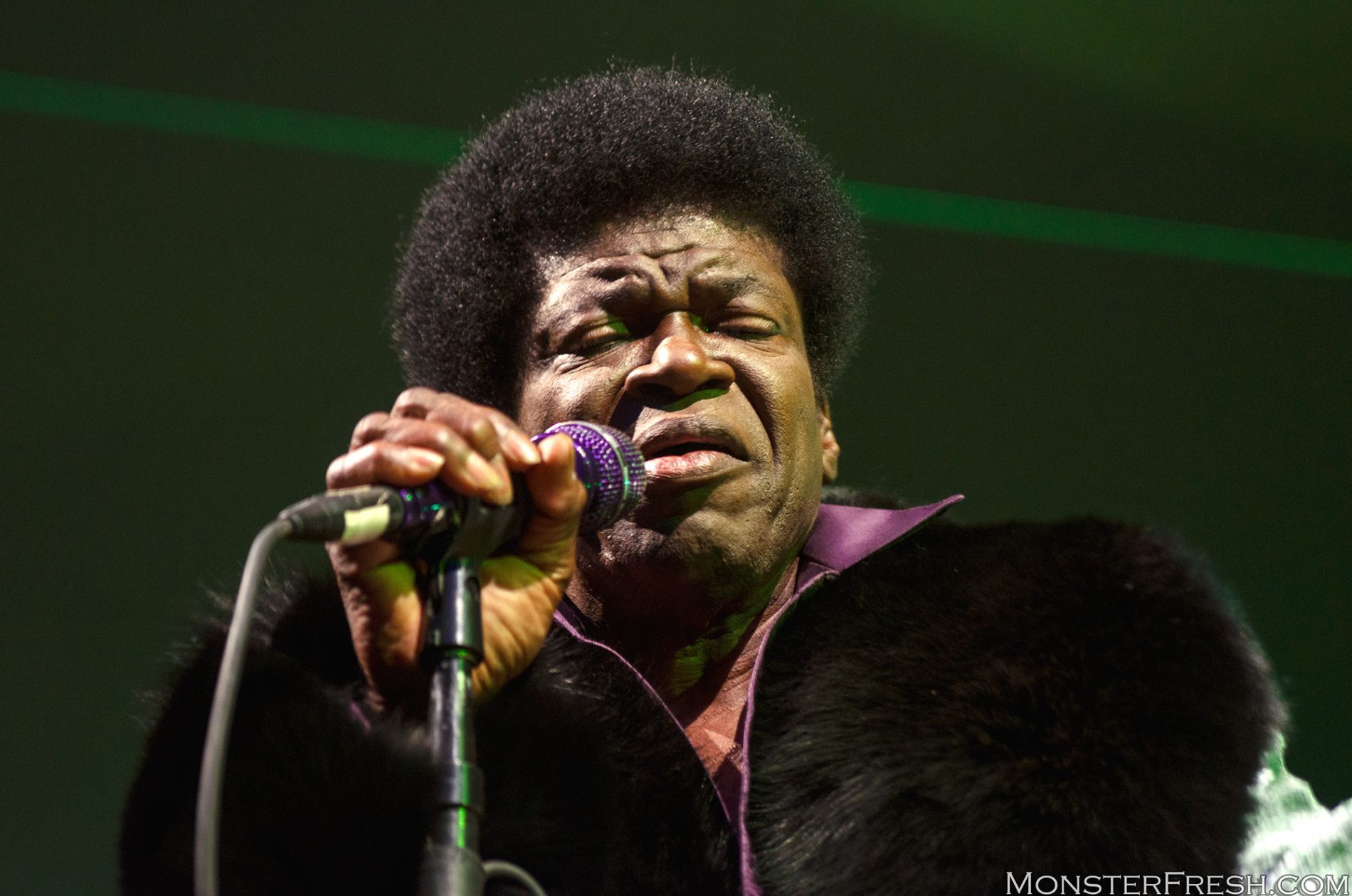
The first time that I ever saw Charles live was when I was covering the 2012 Sasquatch! Music Festival and, whenever anybody asked me who I was there to see, they seemed surprised to hear that I was focused on catching a soul singer in his mid-60s who they’d never heard of doing a 1pm afternoon set. I detailed that experience in my review, but one of the standout moments was when at least one of the teenage girls that was clearly there early to wait for whatever hip young act was meant to follow him, began bawling from pure emotion. That’s the effect that Charles has on people. I’ve seen him perform at least 5 more times over as many years and, to be honest, the routine hasn’t changed all that much, but it doesn’t really matter. Remarkably enough, none of the effectiveness or impact of what he does has lessened in the slightest, either.
For those that don’t know Bradley‘s background, it took him 48 years to eventually realize his dream of becoming a successful entertainer. He was first discovered at the age of 51 by Daptone records co-founder, Gabe Roth while doing his routine as a James Brown impersonator under the name of Black Velvet. He was brought into work with the label then, but nothing really came from it, and it still took another 11 years before anything materialized. Meanwhile, the vocalist’s life was wrought with instability, as his future remained in limbo. Charles‘s history is a rough one riddled with such tragedies as homelessness, poverty, and even the murder of his brother by his own nephew. It wasn’t until he was encouraged by his guitarist/producer at the time, Thomas Brenneck (The Menahan Street Band, The Budos Band, The Dap-Kings, etc) to channel these personal experiences into his work that he really began to come into his own. When his universally acclaimed debut, No Time For Dreaming, hit shelves in 2011, Bradley was 62 years old.
His journey — chronicled in the documentary Soul Of America — was a long and arduous one. During its production, Charles didn’t even know how to read. But what’s so remarkable about the man isn’t that he’s been through so much, but how he has remained unwavering as one of the most optimistic and positive individuals that I’ve ever seen despite all of it.
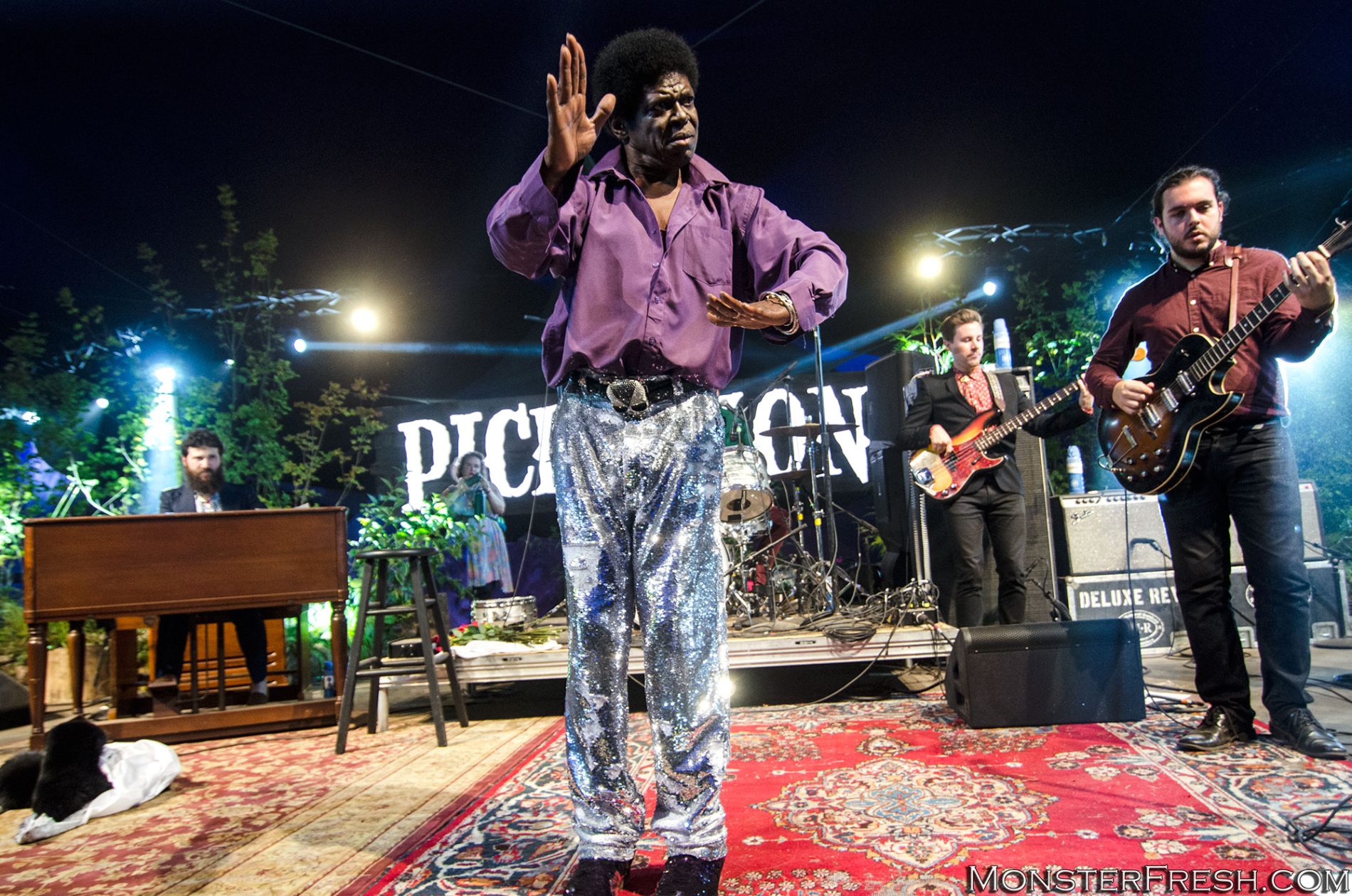
As usual, Bradley‘s backing band, The Extraordinaires, took the stage to warm up the crowd, before the front man entered in a matching ensemble of shimmering discoball-esque shoes, pants, and a coat with black “fur” accents. Throughout the set, he always remains the consummate entertainer, removing his coat, spinning around, gyrating his hips, and even doing the robot. One of his trademark moves is to throw his mic stand forward and yank it back with the mic chord. Another involves dropping to his knees and hoisting the stand onto his shoulder to simulate the lifting of a heavy burden. At the midway point, he left the stage while the band continued to jam, only to return dressed in a gold Egyptian themed outfit, complete with a massive Sphinx belt buckle replacing the one of a rhinestone skull he was sporting previously. The only time he seemed to rest at all was during his cover of the classic Ozzy Osborne ballad, “Changes.” Seated on a wooden stool, he dedicated the beautifully affecting rendition to his late mother, as well as his friend and label mate, Sharon Jones, who past away last year after losing her battle with cancer. The show ended with him distributing a bouquet of roses to the audience, while expressing his love for us with an overwhelming level of sincerity; a sentiment which was reciprocated in volumes by everyone attendance.
Charles himself has been dealing with some serious health issues as of late, and I wasn’t sure if he would even make it to Pickathon this year. In fact, he has since had to cancel additional dates after the festival due to being treated for colitis. That being said, you would never know that he wasn’t in prime condition based on the performance that he put on, not to mention the fact that he followed it up the next night on another stage in the Woods. No matter how many times I see him, his showmanship is always on point, with Bradley giving every ounce of himself to the audience every single time he hits the stage. Now almost 70 years old, one has to wonder how much longer the man can continue to perform, let alone at this level, but one thing that can never be questioned is his appreciation for every opportunity and moment that he’s had as an entertainer. It’s something that he truly exudes with every fiber of his being. If you have an opportunity to witness Charles Bradley live, TAKE IT. His vocals feel as if they originate from the deepest depths of his soul, filtered through every hardship that he’s overcome, and I guarantee with complete confidence that you will never see anyone more heartfelt or give more of themselves as an artist. His shows are as powerful as they are, because you always know that he means it. How often do you get to see a concert where there are tears coming from both the performer and the crowd? It would be a more heart-wrenching display, if the experience wasn’t overshadowed by how inspirational the man is.
We love you Charles. You’re a model of hope and determination that makes us feel as if we could be better people; perhaps, even that we are already. Please take care of yourself and get better.
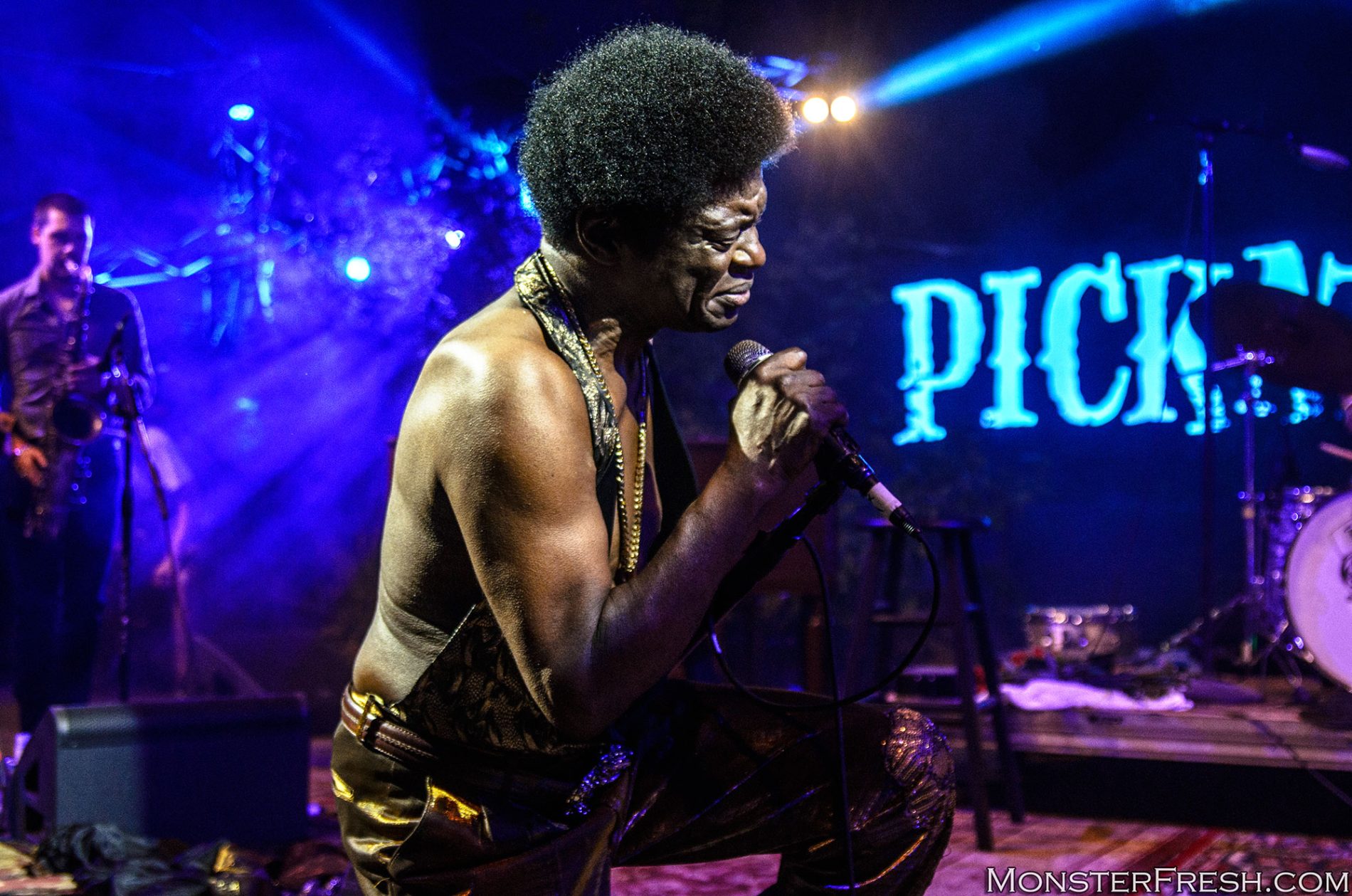
The perimeter of the main area which includes the Mt Hood Stage is lined with various vendors, a selection of high quality food options positioned toward the back. The entire environment is completely devoid of any corporate intervention. There is a major focus on sustainability and, due to some very thoughtful organization, this place is virtually trash free; something unheard of at a major music festival. I make sure to mention these aspects every year when I review the festival, not only because they are so innovative and unique to Pickathon, but because they are so vital in directly affecting the general attitude and experience. In fact, here’s a quick cut and paste excerpt from last year’s coverage breaking down how the food system operates to support their aims.
Klean Kanteen always has a setup there to fill your bottles with fresh water for free. Not only does this support the policy of “no single use items” that the festival has adopted to keep the Pendarvis farm virtually trash free and promote sustainability efforts, but it’s also a hell of a lot more humane than charging concert goers $6 for a bottle of water, just so that they don’t drop dead in the summer heat. There’s a washing station for those who choose to bring their own dishes, but we prefer to pay the $10 and participate in the token system. This involves handing a wooden token to any of the food vendors, who will then give you your meal served in a large commemorative all-purpose bowl featuring the logo/animal for that year. When you’re done, drop the dirty bowl off at the booth and let them deal with it in exchange for another token.
The lady and I shared a massive chicken shwarma bowl, but I’m terrible about photographing that type of shit. Kim and I usually tag team this place with her typically coming away with more of the environmental sort of shots that I overlook, but, unfortunately, the second camera started flashing weird error codes right before we were about to leave town, so we had to scrap that plan. I’m still not sure how I’d be able to cover this event without her help, and that goes well beyond the various photos that she snapped on her cell phone for our social media again this year — the image quality of my phone is outright garbage. Now in our 4th year doing this as a team (we skipped 2015), we have a system to approach this place and know the landscape well enough that that we settle back into it like second nature. It’s always a welcoming return.

This isn’t a picture of our food, but it’s another solid example of the sort of options available. Plus, I have first hand testimony that this meal was delicious. The photo above was taken by my friend Mike who was a returning volunteer. Just before getting our own dinner, we met up with another returning figure in Hollister Dixon who was back covering the festival for his Portland outlet, Faces On The Radio. Hollister first attended the festival last year and was sold on it immediately, just as the rest of us were. The reason that we continue to come back each year, whether to volunteer or to provide coverage for it, is because we’re all pretty much convinced, at this point, that Pickathon is, most likely, the greatest festival in existence.
I’m not someone that is generally interested in going to events like this with the intent of running into a lot of other people — I go see music, photograph it, and get the fuck out — but there’s a particular magic about the Pendarvis farm that is difficult to describe. There is a tangible excitement and enthusiasm among attendees, as if we are all part of something miraculous that can only occur once a year. We wait for it. Perhaps, it could be equated to something along the lines of a less hedonistic version of Pleasure Island from Pinocchio, in regards to how freeing and unrestricted it feels, except without the detriments to your health, struggles with ones conscience, and the potential of turning into a donkey slave. Instead, you actually feel good about yourself and fortunate enough to be one of the lucky ones to have discovered its existence. And while things continue to change, and not every single adjustment is something that I can get behind — I definitely had some qualms with particular issues this year from a media standpoint — there is still nothing else that I know of which comes anywhere close to approaching it on so many levels. More than that, I 100% believe that the original vision behind the festival continues to thrive and the reason for that is because I can guarantee that there is not one person who is more aware of or susceptible to the magic that it generates than it’s founder, Zale Schoenborn.
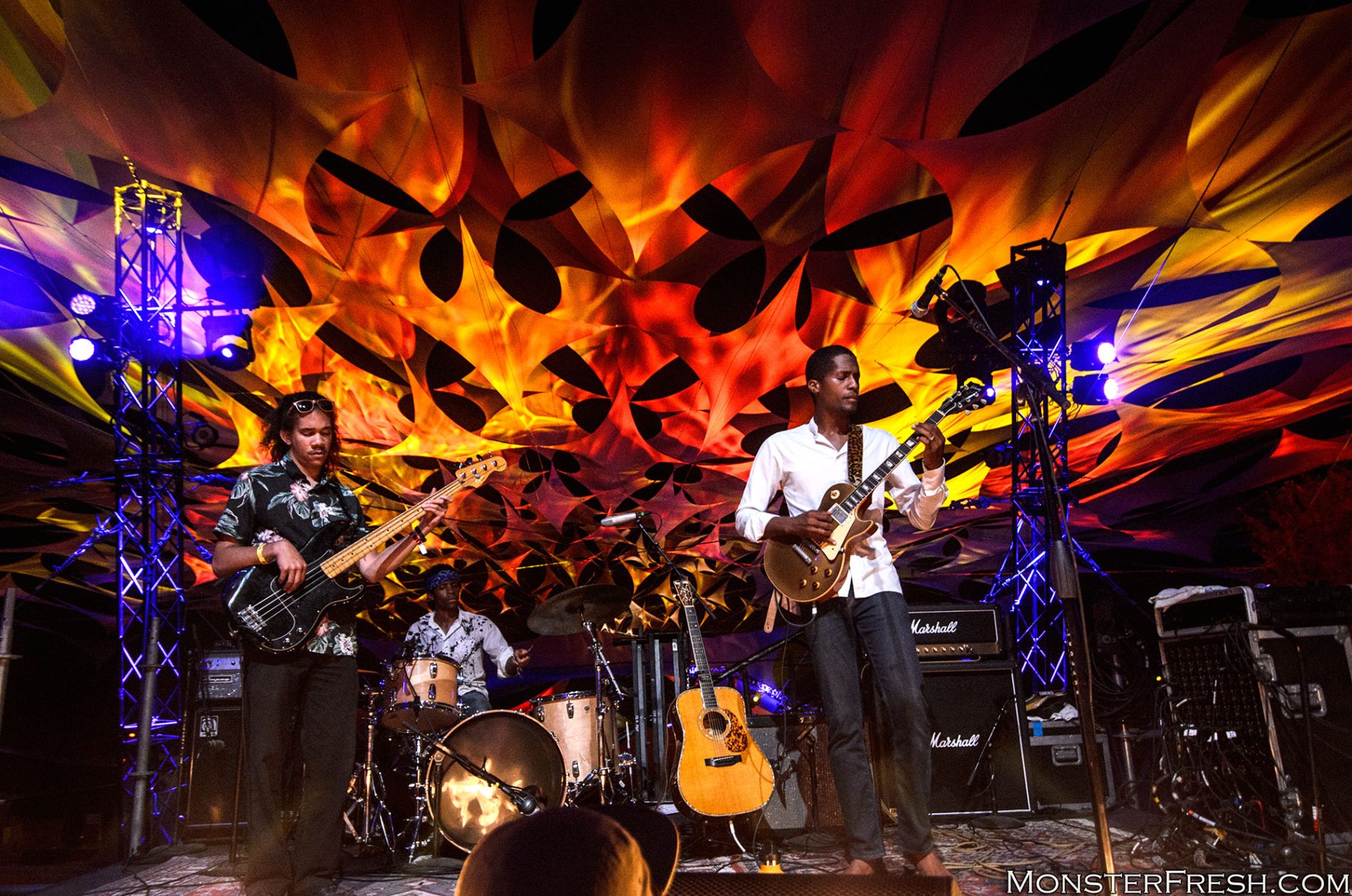
Schoenborn was standing right up front by the Starlight Stage when I approached it, as engaged as anyone, enthusiastic about witnessing the act that he’d played a part in bringing to perform for us.
A fairly basic platform erected at the back of where the general viewing area for the MT Hood stage ends and the food/dining area begins, the Starlight goes live after the main stage closes down for the night. It doesn’t seem like much during the day, but over the years, it has become one of my favorite stages of the festival. Providing shade for the main area is a canopy constructed from tightly pulled interlocking fabric, but at night it doubles as a mesmerizing, surrealistic backdrop/projector screen catching the brilliant mutating lighting display for the Starlight Stage.
The artist performing was Hawaiian-based, Ron Artis II with his rhythm section, Thunderstorm. I wasn’t familiar with his work beforehand, but it’s no surprise to discover that the 30-year-old has been playing music his entire life and in various genres from blues, jazz, and flamenco, to Rock, R&B, and soul. His bio states that he “loves to create new songs on the spot in his concerts,” living by the motto “music is meant to be lived, as life is meant to be lived.” I’d also wager that live is the best way to experience Artis‘s music, as he is clearly a bit of a technical virtuoso, attacking his guitar like his strumming hand was comprised of a swarm of locusts snorting the crushed up beads from a time-release Adderall. Content-wise, he had a positive message, but it seemed a little too simplistic for my taste, not too mention a little bit Stuart Smalley, as he encouraged the audience to strive to just be themselves. As an old jaded bastard that’s been through a ton of crazy scenarios in my lifetime and ingested inadvisable levels of hallucinogenics in my youth, I think that I just need something a bit deeper, or at least, more complex and/or twisted, from anybody attempting to impart some level of wisdom on me. I’m looking for that next level, outer cosmos shit. Fortunately, next level is what Artis delivers with his unorthodox approach to his instrument and, with such an undeniable level of talent, from a technical standpoint, it’s difficult not to be enthralled by seeing it on display.
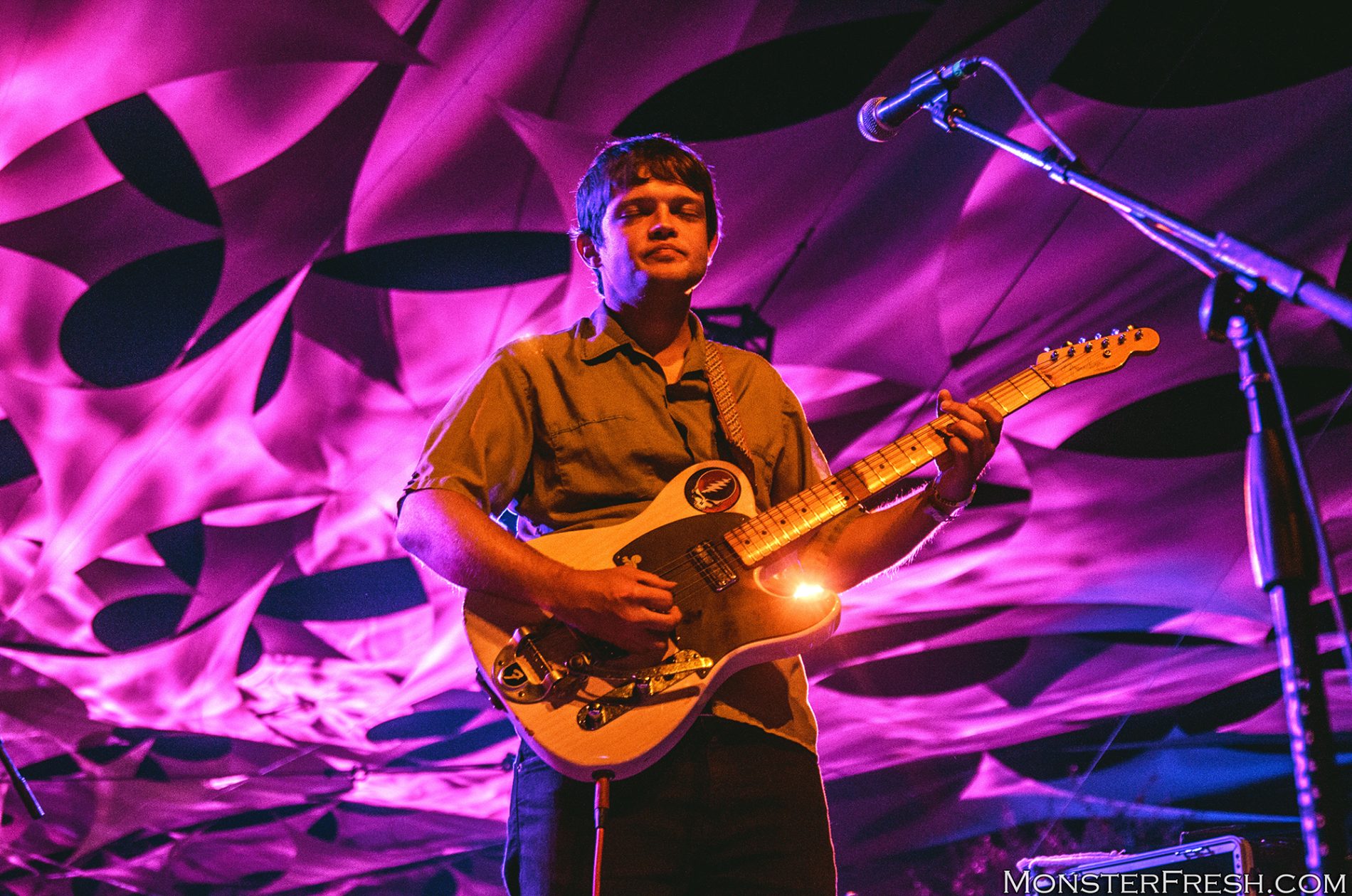
Following Artis was another trio led by another guitar wizard, albeit with a very different approach. William Tyler is an alumni of Pickathon, performing at the festival back in 2015, and a last minute replacement for a Colombian act that was forced to cancel their appearances. Tyler began releasing albums under his own name in 2010, but he’d already had a solid decade under his belt as part of such notable acts as Lambchop and Silver Jews, the latter of which I now realize that I saw him perform with during their final tour in 2008. Backing him for this tour is the Modern Country band, which consists of Brad Cook and Joe Westerlund of Durham, NC psych folk outfit, Megafaun. Modern Country is the name of Williams‘s latest album, a purely instrumental effort of pastoral folk and unfurling guitar work. Tyler‘s approach to his instrument isn’t as overt as that of someone like Ron Artis II, but there is no end to its complexity, his brilliance lying in the the beauty of the compositions, his finger work, and the subtle weaving of the instrumentation. These tunes travel, buoying the listener up to be carried along by them to wherever they may lead, but there are still the explosive moments where the gentle sunsets are overcome by dark impending clouds and swirling storms, only to recede back again into mist and dusk. This is music that you can almost breathe at times and a welcomed offering after a day of traveling, unpacking equipment, and enduring such blazing heat.
William Tyler finished his set by announcing that they only had one song left, but joked that it would be 45 minutes long. “It’s called Dark Star,” he continued, making reference to the epic Grateful Dead original. Someone screamed out what must have been a Dead show date, because Tyler quickly responded with, “No dude. 4-24-72.” The Steal Your Face logo on his guitar was one of the first things that I noticed when he took the stage and his official website is a Tumblr page that is just as much of a platform for him to post choice archival footage of live Dead performances as it is to promote his own work.
After Tyler‘s set, we headed back to our temporary home in the woods. It was already past 2 am and we hadn’t even put in a full day yet. It was going to be a long weekend.